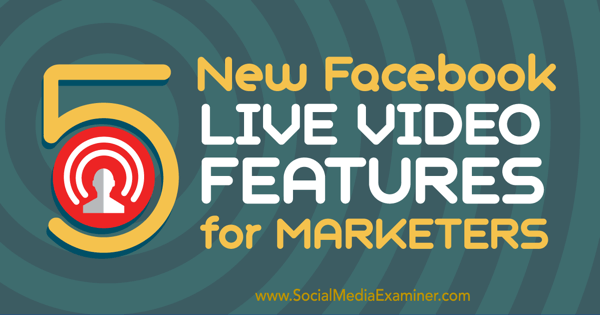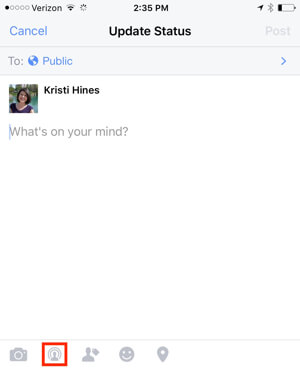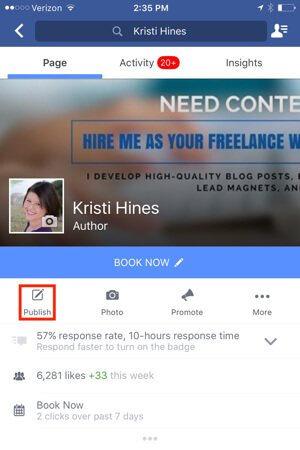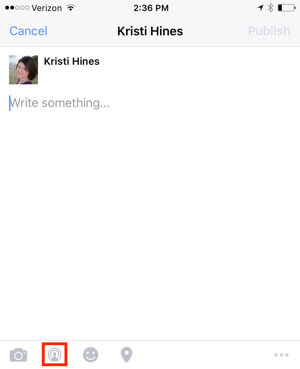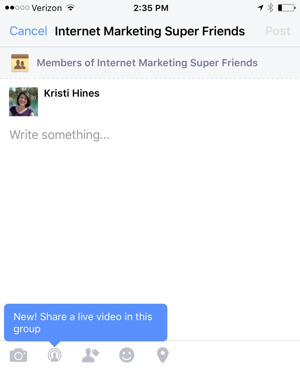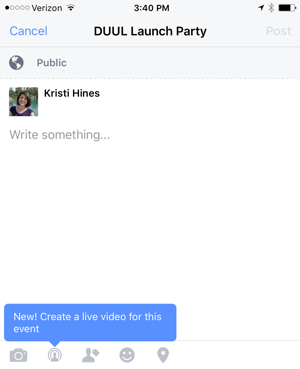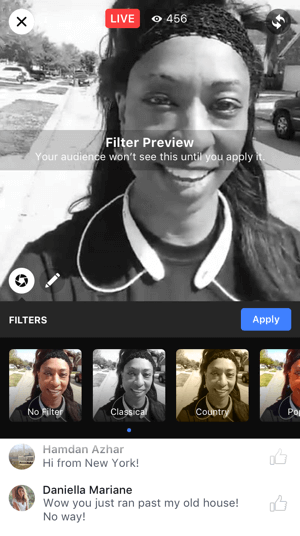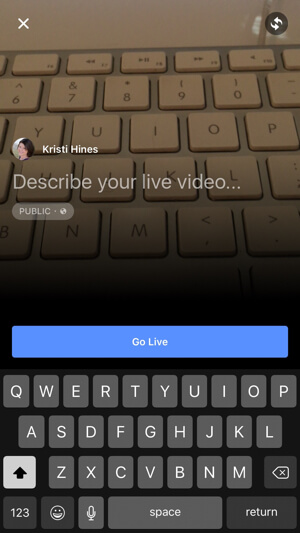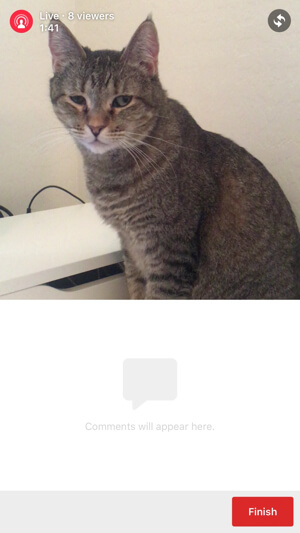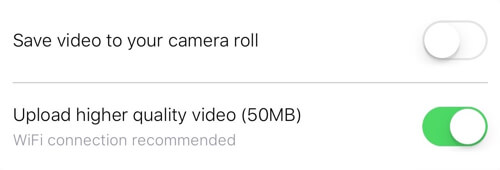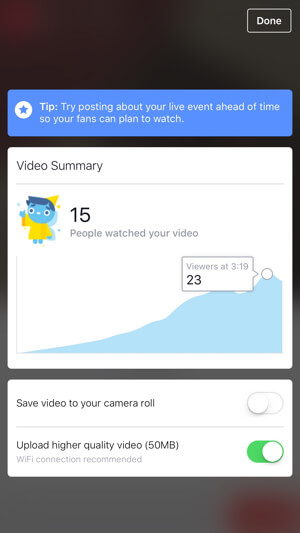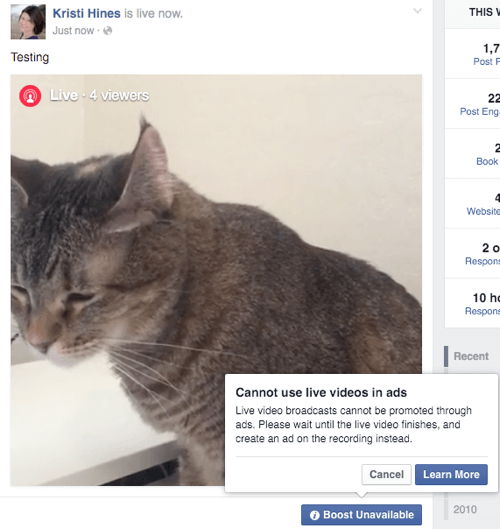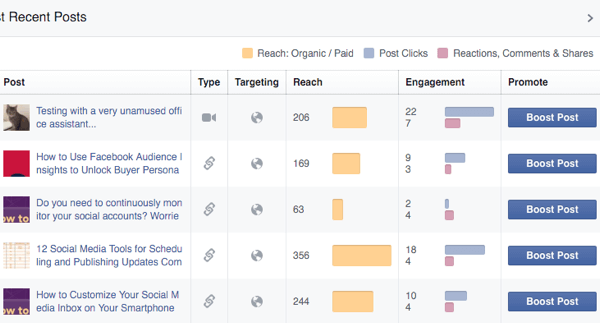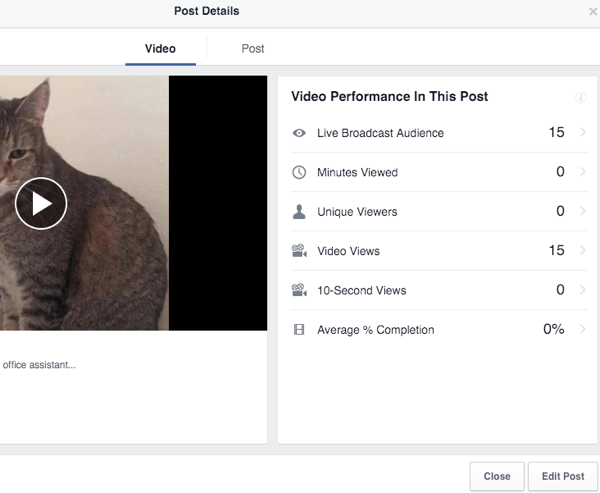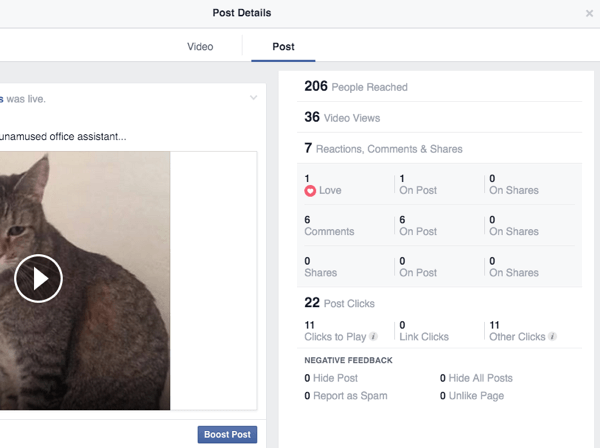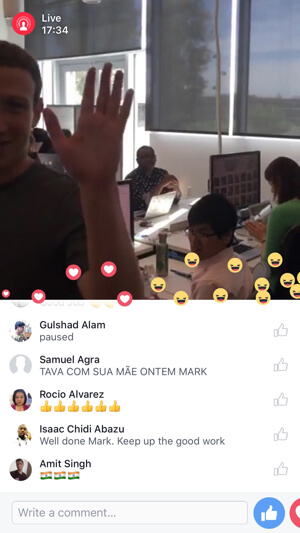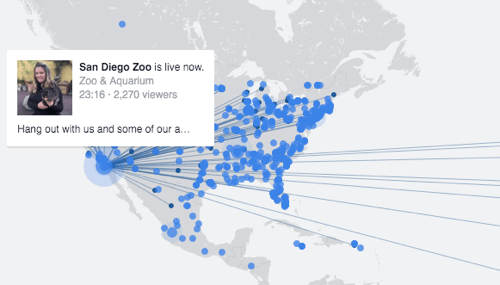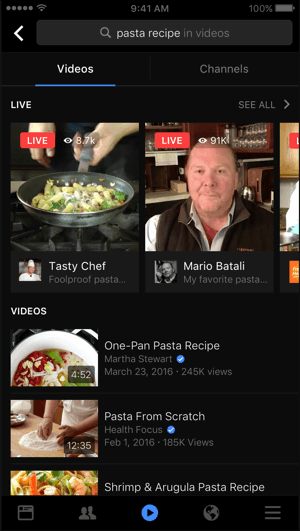As an entrepreneur, you know how important it is to optimize all your investments so you’re getting the best possible ROI.
You probably track your marketing ROI, your profits and losses, but what about optimizing the most important thing you’ve got working for you…your brain?
Recently I’ve been exploring neuroscience as a way to help people do things like beat social anxiety and boost self-confidence by gaining a “mental advantage.” The biggest takeaway I’ve learned is that the brain is a remarkable tool.
I’m talking about a tool so fast that information travels between neurons at over 260 mph, is so strong that it stays alive even after you die, and generates more electrical impulses in one day than all the telephones on this planet.*
Mental Hack #1: Transforming Your Habits
It’s easy to consume information about what we should be doing…but how many times have you actually put those things into action?
Today I want to start off by setting the stage with habits. If you understand the science behind habits, you’ll be able to implement the tips that follow to ensure long-term change as well as establish any type of habit you want to perform.
Habits regulate what we do almost every second of every day, whether we consciously realize it or not. They are established in the neural pathways of your brain and are strengthened upon repetition.
Habits come in all shapes and sizes. They can be:
- Mental- i.e. your inner-critic triggered after a tiny mistake
- Physical- i.e. your exercise routine
- Verbal- i.e. losing your temper when someone says something you don’t agree with
Habits live in a very deep, primitive part of your brain called the basal ganglia.
It’s responsible for habit regulation and it’s so powerful that even people who have memory loss and brain damage still remember their old habits if the basal ganglia isn’t damaged.
Let’s dive into the science behind habits called the “habit loop” introduced by Charles Duhigg in The Power of Habit. Once you understand the habit loop, you can transform ANY habit you have and turn it into the habit you want to do.
The habit loop consists of three things–let’s use brushing your teeth as an example:
- Cue– this is the “trigger” that precedes the routine– it would be the time of day since it’s the first thing you do in the mornings
- Routine– this is the actual “act” of what you are doing– brushing your teeth
- Reward– this is the intrinsic or extrinsic reward you get from performing the routine– the “tingling” sensation you feel after brushing
Let’s dive deeper into each of these facets and how you can use it to transform your habits.
Step 1: Identify the Cue
Think of cues as triggers, it’s what makes you perform the routine. If you wake up at 6:00 am everyday your cue is likely your alarm going off. Here’s one I can attest to– turning on your TV as soon as you plop on your couch (cue).
Cues can be based upon:
- Location
- Time
- Mental State
- Other People
- Immediately preceding action
Cues are also a great way to get you to do something. For example to make sure I don’t skip breakfast, I measure out and put my oatmeal in a bowl the night before. When I wake up in the mornings I’ll see it on the kitchen counter, cueing me to simply throw in some water and pop it in the microwave. This helps guarantee I have a healthy breakfast everyday.
When it comes to effective habit change, you first have to identify the cues that trigger your routine.
For example, if you end up eating a donut everyday at 3:00 pm think about what is cueing that: is your blood sugar low? Are you feeling stressed out? Are you eating out of boredom because you run out of tasks to do at that time of the day?
How to identify your cues:
I recommend tracking the cues that you’re identifying in a journal. Note down the time of day, how you’re feeling, what your environment is like, who you’re with, energy levels, etc. that way you can focus in on the cues that are getting you to perform those bad habits.
Now that you understand how important it is to identify your cues, let’s talk changingthe routine?
Step 2: Change the Routine
Changing the routine is the most important part of the habit loop because it’s the only part that can be changed.
Let’s suppose you have a nasty habit of getting sucked into social media when you’re starting your workday. You’ve identified that the cue is relatively harmless– you initially hop on social media in the mornings to tweet out a blog post you wrote. But the next thing you know you’re, sucked into all the “bright lights” of social media like pictures of your friend’s new baby.
How to change the routine:
You know that logging into social media in the mornings is throwing off your productivity, so you can replace the routine by scheduling your tweets the night before to avoid the temptation of social networking in the mornings. It’s important to be specific, take it a step further and define the exact time that you’re going to be scheduling tweets in advance.
Now that you have a routine replacement, let’s move on to the next step.
Step 3: Reward Yourself!
Immediately after a successful routine transformation, reward yourself with a meaningful reward.

The man, the legend: B.F. Skinner
Simply put, rewarding a certain behavior will make it more likely to be repeated.
Skinner illustrated this using the famous “Skinner box” where a rat was placed inside a box with a lever and every time the rat ran into the lever a food pellet would fall out. Well guess what the rat did after a few times of bumping into the lever and getting some food pellets? Yep, it went straight to the lever every time it was placed in that box.
Now I’m not trying to compare you to a rat, but a principle is a principle!
How to choose a reward:
Make sure your reward is:
- Gratifying– something you genuinely like
- Minor– make it reasonable. You can’t reward yourself with $1,000 every time you change your routine (or maybe you can…) you get the picture
- Accessible– it’s best to reward yourself right after a successful routine transformation, by choosing a reward that you have easy access to you’ll make it easier to attain rather than waiting for.
Reward options can be things like a cup of coffee, a 15-minute guilt-free session of web surfing, a beer after a hard workout or something that has sentimental value to you.
Step 4: Repeat the Above
In order to strengthen the new neural pathways you’re creating, you have to repeat your new habit loop. If you do this effectively you’ll find yourself on auto-pilot, performing the new habits without much thought.
The better you are at identifying the cues that lead to negative routines, the better shot you have at changing the habit. Once you successfully transform them, positively reinforce yourself immediately to strengthen the new neural pathway.
Most of the research suggests that 21 days is the optimal number of days to repeat the habit to make it permanent, but it varies widely depending on the person, the routine, and environment.
The Habit Loop in Action (Example)
Now that you understand the different parts of the habit loop, let’s put it all together. I’ll use a personal example of how I used the habit loop to wake up earlier everyday.
In the past, my mornings were short and hectic. My alarm would go off, I’d snooze a bunch of times and before I knew it I was running late to get to the office. I’d throw something on, make a quick coffee and run out the door.
My day started off stressful and it wasn’t a great start. I wanted to have a consistent routine in the mornings so I could wake up earlier and not feel stressed out.
Cue:
I realized the main reason my mornings were off was because I kept on snoozing. The number of times I’d snooze depended on how tired I was. Doing some analysis of the cue, I figured out it was because I was going to bed at various times..anywhere from 11:00 pm to 1:00 am.
In order to course correct, I started going to bed consistently, no later than 11:30 pm every night. That alone was a game-changer. I also read that it’s a good practice to drink a glass of water before you go to bed and as soon as you get up. I placed a glass of water by my phone making it easy to drink as soon as my alarm went off and it served as an effective visual cue.
Routine:
When my alarm would go off I’d wake up and chug the water, it actually did help me feel refreshed. The other interesting thing was because I drank a glass of water prior to sleeping, I had to use the bathroom making me even more eager to get my butt up!
Were there days when my alarm went off and I still felt tired? Of course! That’s where the reward came into play.
Reward:
I’m a huge coffee lover and recently discovered bulletproof coffee, so I decided to make that my reward when I’d wake up on time without snoozing.
The reward worked because it takes a few minutes to make (meaning I had to get up a bit earlier) and I really enjoy it..finally, it gave me a ton of energy to start my day!
On days where I felt tempted to hit snooze, I’d just picture sipping my bulletproof coffee and that helped me harness the motivation I needed to follow through.
I did this consistently for about two weeks and now it’s on auto-pilot!
You can use these principles to make change when it comes to anything from the way you work, getting yourself to exercise or quit a habit you’ve been wanting to change forever. The power is now yours, use it wisely.
2. Mental Hack #2: Optimizing Your Willpower
Now that you’ve mastered habits, let’s talk about willpower. The reason why I covered habits first is because the more behaviors that are auto-piloted by your habits, the more willpower you have reserved to do better at things that matter.
Wouldn’t you rather use up your willpower to make a business decision rather than trying to decide how you’ll have a healthy breakfast in the morning?
Let’s deep dive into willpower and how you can optimize it to become more effective as an entrepreneur.
Do you ever come home after a long day at work and give up on deciding what to make for dinner? You pickup the phone and order pizza because you can’t even imagine spending brain power on deciding what to cook and how you’ll do it. Trust me, I’ve been there many times.
Well that long day probably included performing difficult tasks that require extreme focus, making a bunch of tough decisions, and interacting with coworkers.
Basically you’re “drained” from using your willpower, this is because it functions like a fuel tank and gets depleted throughout the day by two factors: exercising self-control and making decisions.
The Limitations of Self-Control
In a classic willpower experiment, two sets of students were invited into a room with chocolate-chip cookies and radishes. The first group that entered was invited to eat the cookies. The second group was asked to resist the cookies and eat radishes instead.
Afterwards, they gave everyone an impossible geometry puzzle to solve. The students who ate the cookies worked on them for an average of 20 minutes. Guess how long the radish-eating students who had to resist the cookies worked on the puzzle? An average of 8 minutes, they then gave up.
The study illustrates that using self-control in one task negatively impacts your willpower to perform sequential tasks, that’s why the second group gave up so easily. To put this in startup terms, this may be when you’re working 24/7 on your project and let other things slip like hygiene (is your beard getting too long?) or eating healthily.
By the way, exerting self-control goes beyond simply resisting temptation.Anytime you have to control your emotions in some way you’re exerting self-control, this is something we do an average of four hours a day.
In another study, people who were told to suppress their emotions while watching a sad movie showed depleted levels of willpower compared to those who were simply told to watch the movie without instructions.
Anytime you’re trying to control your emotions like when you’re trying really hard to not lose your temper or putting on a “brave face” during the entrepreneurial lows, you’re using up willpower.
The Limitations of Decision-Making
Decision-making is the other factor that withers your willpower.
In an astonishing study, researchers studied 1,112 rulings by Israeli judges on whether or not to grant a criminal parole. What was the #1 determinant in whether the criminal would get parole or not? It was not their ethnicity, religion or severity of the crime…it was the time of day!
The earlier in the day the case was, the higher the odds of the criminal getting parole. It turns out that the judges suffered from “decision fatigue” towards the end of the day and the easy decision to make after being fatigued was to simply say “no.”
When we face difficult decisions after our willpower has been depleted, the brain looks for shortcuts by doing one of two things:
- Making impulsive choices– this is when you give up and order pizza or when the judge denies a criminal parole because it’s the easy thing to do
- Do nothing– this is when you simply have no energy to even consider the factors of decision-making and don’t make a choice
Now that you understand the limitations around willpower, how can you use it to your advantage?
Tip #1 : Do your hardest work earlier in the day
Since your willpower is like a tank of gas that gets depleted throughout the day, try to schedule doing your hardest work earlier.
Use the habit loop to turn this hack into a daily routine where you tackle the most difficult tasks first. Here’s an example of a habit loop you can use:
- Cue– the night before, schedule a Google calendar event for 7:00 am and title it as the hardest task you have to do that day. The next morning you’ll get a pop-up reminder that serves as your cue
- Routine– do the task at 7:00, duh!
- Reward- you can reward yourself with a morning coffee or a 15-minute break to do whatever you want
Tip #2: Avoid willpower drains
Your goal is to reserve your willpower, therefore it’s critical to avoid things that quickly deplete your self-control like interacting with a coworker who you find hard to deal with or putting yourself in situations where you have to resist temptation.
A University of Toronto study, “found that people whose willpower was depleted by self-control tasks showed decreased activity in the anterior cingulate cortex, a brain region involved with cognition.”
Be sure to avoid putting yourself in situations where you have to exert a lot of self-control or hold back your emotions right before an important meeting or event.
Tip #3: Eat
Glucose is fuel for your brain, interestingly it has been scientifically proven to improve self-control. Studies show that both humans and dogs who had to exert willpower show depleted levels of glucose compared to those who didn’t. Something as simple as drinking a glass of lemonade or Gatorade has been shown to improve self-control.
If you have to focus or make continual decisions throughout the day, make sure you’re blood sugar levels are sufficient.
You may want to get a hit of glucose before making that next big decision!
Tip# 4: Build your willpower muscle
Willpower is like a muscle that can be strengthened. Strengthening willpower is a great way to improve your discipline over the long-term.
You can build your willpower by systematically avoiding temptation and improving your self-control. A helpful tactic to use is called “implementation intention.”
The idea is to have a pre-planned action step when you’re tempted with something you want to avoid. You can think of it as an “if, then” statement.
For example, if you are trying to kick the habit of constantly checking your inbox, your “then” statement can be:
“Every time I’m tempted to check my email, I will double check my ‘to-do’ list for the day and work on my #1 task instead.”
Getting specific around what your “then” action will be will help you exert self-control over the things that matter and doing this repeatedly will help you both build new habits and strengthen your willpower.
Mental Hack #3: Training Your Brain For Success
It’s pretty obvious that we’re constantly overloaded with information. In one day we’re exposed to the equivalent of 174 newspapers worth of data. Of course you’re too busy to pay attention to all that information, so you simply pay attention what’s relevant to you. How?
There’s a part of your brain that’s solely dedicated to filtering and focusing your attention to things that are important, it’s called the reticular activating system(RAS). It’s a loose network of neurons and neural fibers that run through your brain stem.
You may have experienced your RAS in action when you’ve considered buying a particular car. Do you realize that you start noticing that car everywhere?
Well it’s not that everyone went out and bought that car, it’s that your RAS has been primed to focus on it since it’s now deemed “important” to you.
Simply put, the RAS links your thoughts and feelings with similar things in your environment.
How can you use the RAS to your advantage?
Tip #1: Write down your goals
Writing down your goals helps your brain focus on the things that are important to you. Since the RAS links the unconscious and conscious parts of your brain, you want to prime it to focus on the things that can give you disproportionate results.
To help you do this, take some time to clearly define what your goals are and how you will execute them:
- Envision your desired future: Vividly imagine what you want your future to be like. What type of business will you be running? Where will you be living? Who will you be hanging out with? Working with?
- Establish long term-goals: Get specific on what your long-term goals are. For example, if you want to “work from wherever” then your long-term goal may be to generate at least 75% of the income from your startup that you’re generating from your day job. Create a few long-term goals that are in line with the desired future you just mapped out
- Establish micro-goals: Once you understand your desired future and have a few long-term goals you want to achieve, chunk them down into short-term micro-goals to set yourself up for small wins.
If one of your long-term goals is to start your own business, your micro-goal would be to identify a specific market with a specific problem you can fix. If you’ve already done that your next micro-goal could be simply making $100 in 30 days.
Make sure your micro-goals are specific, achievable, and have a deadline. You can then get even more specific and outline the action items that would get you to $100.
Writing this down will activate your RAS and get you concentrating on the things that matter while ignoring all the other “noise” that can distract you from reaching your goals. Studies have shown increased retention and brain activity when you write things down versus typing.
Tip #2: Visualize
The RAS also controls your belief system, you can use it to cultivate a stronger belief in yourself through visualization.
You can use this to improve your mental strength, whether it’s to silence your inner-critic or harness the motivation you need to get through the entrepreneurial lows.
Think back on a moment when you achieved something challenging in your life. Maybe it was the time you worked hard on a project that was well received or the time you hit the game winning shot?
Visualize those moments in vivid detail, down to the tiny things like what you were wearing and thinking in your head as it happened.
What did it sound like, feel like, who were you with, what traits got you there, how did you persevere when the going got tough?
By visualizing your past success you can feel that same sense of achievement you felt back then and you can identify the traits that got you to that “win.” You can then focus on those traits to cultivate them in a deeper way to replicate success.
Let’s suppose that one of the main reasons you were able to learn a new language quickly was because you had a language partner that helped you practice and improve.
In business terms, that may translate into identifying a mentor in your field who can push you to practice and improve.
Taking the time to visualize past success will help you identify the top qualities that got you there and will prime your brain to begin focusing on developing those traits. You may find yourself becoming hyper-aware of networking events or people in your life who could serve as mentors once you’ve identified that as a factor for success.
Another positive byproduct of visualizing past success is that you activate the same sensory and motor programs in the brain that were involved with the action you’re visualizing.
In a groundbreaking experiment piano players were divided in two groups. One was told to physically practice, while the other was told to “mentally” practice by visualizing playing the piano.
In both groups, the same physical changes in the brain were found in the motor cortex and after three days their accuracy was exactly the same regardless of how they practiced. Crazy right?!
Visualization is not some new-agey voodoo, it’s a real way to activate the areas in your brain that can help you achieve your goals tangibly. Top athletes also use visualization techniques to prepare for victories and you can too!
In Conclusion
Being an entrepreneur is tough, the path is paved with numerous challenges.
By being able to build positive habits, make good decisions, work “smartly,” and deeply focus on the stuff that matters are essential to becoming a successful entrepreneur.
By understanding how your brain works and optimizing it to your advantage, you can have a “mental edge” on your entrepreneurial journey.
Get started optimizing your brain today! Now that you have the framework of the habit loop, you can actually put these tips into action. Comment below and share your favorite tip and how you’re going to implement it in your day!
http://startupbros.com/how-elite-entrepreneurs-do-more-with-less-time-3-science-backed-brain-hacks-you-can-start-using-today/?utm_source=feedburner&utm_medium=feed&utm_campaign=Feed%3A+StartupBros+%28StartupBros+-+You+don%27t+need+a+job...%29
.jpg) What if you could get paid to post stuff on Facebook? And not branded content or marketing messages - what if there was a way for you to build a fan base simply by posting things you like, and that your Facebook audience is interested in? That idea could be the seed of a new project by Facebook, or, at least, Facebook’s conducting some initial research on a plan which could see The Social Network introduce new ways to give individual users the ability to make money from their Facebook presence.
What if you could get paid to post stuff on Facebook? And not branded content or marketing messages - what if there was a way for you to build a fan base simply by posting things you like, and that your Facebook audience is interested in? That idea could be the seed of a new project by Facebook, or, at least, Facebook’s conducting some initial research on a plan which could see The Social Network introduce new ways to give individual users the ability to make money from their Facebook presence.


